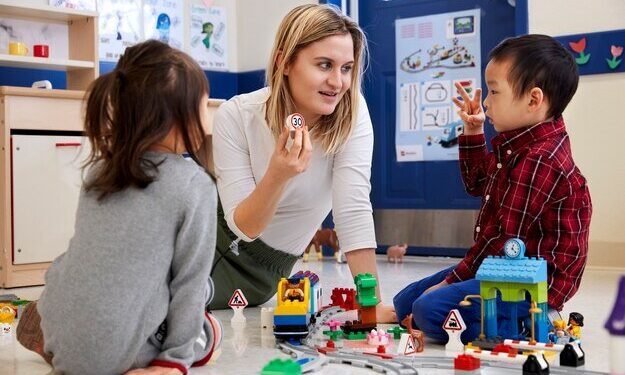Last Updated on January 10, 2024 by Flavia Calina
Establishing a STEM (Science, Technology, Engineering, and Mathematics) lab is crucial for igniting curiosity and fostering innovation in students. Students who can think creatively can come up with unique solutions. Creativity also teaches kids to be flexible with their ideas so they can try another approach if something doesn’t work the first time.
Many schools have invested in STEM labs to teach students high-tech learning experiences.
Create a Culture of Curiosity
Curiosity is a critical aspect of children’s development and an essential part of learning. Previous research shows associations between curiosity and academic achievement, but more is needed about how to promote curiosity in classrooms. STEM lab are vital in education, nurturing a passion for science, technology, engineering, and mathematics in students of all ages.
Curious students learn more, retain information longer, and demonstrate greater creativity. They also display higher levels of persistence and a stronger sense of purpose. In addition, they are more likely to be satisfied with their work when it yields unexpected results.
Embrace Diversity
Diversity is an integral part of innovation. When teams of individuals with different backgrounds and cultures work together, their diverse perspectives can create new ideas. Studies have shown that cognitive diversity improves team creativity by expanding problem-solving capabilities and allowing alternative approaches.
Inclusive education is critical to promoting diversity in STEM. Early exposure to various people helps students embrace differences and accept each other’s unique perspectives.
Unfortunately, despite the many benefits of a diverse workforce, the reality is that women are still underrepresented in STEM fields. To change this, institutions must concerted effort to promote diversity and inclusion. One way to do this is by conducting anonymous climate surveys and publicizing these results to encourage discussion about inclusivity.
Encourage Mentorship
In a lab, students work together synergistically on projects to explore their ideas, questions, and imaginations. They can pool their talents and create a widget, essay, science experiment, poem, service, or product from their explorations. The resulting project inspires new questions and insights, allowing curiosity to bloom further.
Encourage your lab professionals to mentor students. It provides them with valuable career insights that help to cultivate the right mindsets for STEM. Invite professionals from other fields to conduct workshops and give lectures. It helps inspire students’ curiosity by exposing them to the possibilities of STEM.
Mentoring relationships also play a critical role in fostering scientific identities, especially for underrepresented students. To support this, mentors and mentees should discuss their expectations for the mentoring relationship early.
Involve Employees
Involving employees in a STEM lab is critical to fostering curiosity and innovation. Invite professional engineers, scientists, and technicians to conduct classroom workshops, lectures, or mentoring sessions. It gives students a glimpse into the real-world applications of STEM and inspires them to pursue careers in these fields.
Ensure the lab has enough workspace and equipment for students to explore different activities simultaneously. Students must be able to move around, collaborate with their peers, and access techs like 3D printers or virtual reality devices.
Allow students to experiment and make mistakes in a physically and psychologically safe environment. It helps them to build resilience and develop a sense of self-efficacy, both essential attributes of successful learners.
Create a Culture of Innovation
When kids are curious, they observe the world around them and constantly ask questions. This curiosity helps them create ideas, connect concepts, and make discoveries that can lead to innovative STEM outcomes.
Please encourage students to explore new concepts through open-ended challenges and projects that allow them to use their critical thinking skills and creativity. This type of learning fosters flexible thinking skills that can enable individuals to discover innovative solutions to intricate problems in the future.
In addition, students can benefit from collaborating with STEM professionals who can help them align classroom lessons with real-world applications and provide them with industry insights. For example, a student interested in computer programming can connect with a software engineer from a reputable tech company who shares their journey and offers guidance. Read more exciting articles on Today World Info











